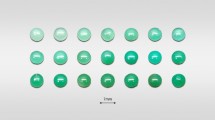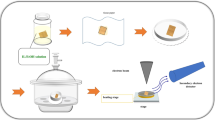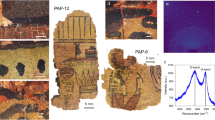Abstract
THE basic difficulty in devising a method for selectively increasing the density of protein in a tissue section, in order to increase its contrast under the electron microscope, is to choose some atom or group of atoms unique to the protein, and which may be replaced or substituted by some heavier atom or group. The amide group occurs in all proteins as the peptide link, while it is absent in all other macro-molecular cell constituents. N-chlorination(·NH·CO·→·NCl·CO·) is a well-known reaction with simple amides, and it therefore seemed that chlorination might offer a simple means of increasing the density of the protein. Although chlorination of other cell constituents (and other structures in the protein) would undoubtedly also occur, it was considered that the background increase in density produced in this way would be small compared with the increase in density of the protein, for theoretically 1 gm. atom of chlorine can react with each 100–150 gm. of protein, depending upon its amino-acid composition. Vandevelde1 has shown that many proteins, both fibrous and globular, react with chlorine to give materials which contain about 15 per cent chlorine, a content which corresponds to substitution at most of the peptide links. Most of the chlorine is lost from the modified protein by treatment with water, giving hydrochloric acid, which probably arises by hydrolysis of the N—Cl bond followed by oxidation of the protein by the hypochlorous acid which is formed. Exposure to chlorine gas, followed by spraying with iodine and starch solutions, has been used as a delicate test for amino-acid, peptide and protein spots on paper chromatograms2.
This is a preview of subscription content, access via your institution
Access options
Subscribe to this journal
Receive 51 print issues and online access
$199.00 per year
only $3.90 per issue
Buy this article
- Purchase on Springer Link
- Instant access to full article PDF
Prices may be subject to local taxes which are calculated during checkout
Similar content being viewed by others
References
Vandevelde, A. J. J., Rec. trav. chim., 45, 825 (1926); 46, 133, 590 (1927); 47, 458 (1928).
Rydon, H. N., and Smith, P. W. G., Nature, 169, 922 (1952).
Chalsty, J. S., and Israelstam, S. S., Chem. and Indust., 1452 (1954).
Hillier, J., and Hoffman, J. H., J. Cell and Comp. Physiol., 42, 203 (1953).
Author information
Authors and Affiliations
Rights and permissions
About this article
Cite this article
COOMBS, M., DANIELLI, J. Chlorination of Proteins as a Method of increasing their Opacity in the Electron Microscope. Nature 183, 1257–1258 (1959). https://doi.org/10.1038/1831257b0
Issue Date:
DOI: https://doi.org/10.1038/1831257b0
Comments
By submitting a comment you agree to abide by our Terms and Community Guidelines. If you find something abusive or that does not comply with our terms or guidelines please flag it as inappropriate.



